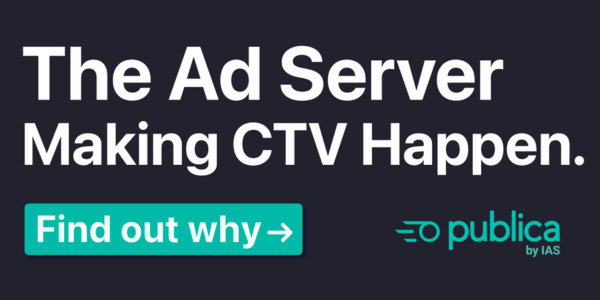The distribution of live sports on CTV is driving one the biggest disruptions to traditional linear TV advertising. For the first time, NBCUniversal Olympics inventory was made biddable on Peacock. With over 4.5 billion minutes of coverage streamed during opening weekend – and the second-best day of engagement ever for Peacock – advertisers reaped the rewards of digital viewership.
The Paris Olympics could mark a paradigm shift in CTV moving toward live sports. Prime Video recently announced they would be the exclusive streaming service for 66 regular-season NBA games starting in 2025. Both media companies and advertisers are hyper-focused on building a linear-like TV experience combined with the precision and performance of digital.
Live sports could be the catalyst that makes CTV advertising a must-have investment for brands.
With ad-supported subscriptions to major streaming platforms becoming more affordable, and CTV ad spend forecasted to grow 39.6% by 2027, CTV advertising has evolved far beyond its niche origins. And media companies that focus on providing relevant and engaging CTV ads can deliver ad experiences that not only drive ROI for brands but keep audiences returning.
From avoidance to acceptance of CTV ads
Netflix, an initially hesitant adopter of ad-supported programming, announced during its Q2 2024 earnings call that its ads tier saw user growth of 34% quarter-over-quarter. According to recent estimates from eMarketer, Netflix is on track to see approximately $1 billion in advertising revenue this year.
The latest 2024 IAB Digital Video Ad Spend & Strategy Report found that three-quarters of CTV buys are now done programmatically. Media buyers are looking for reach, engagement and precision. Publishers, on the other hand, have been tentative to go all in on programmatic CTV. Concerns over premium content being undervalued and a preference for direct buys have slowed adoption.
While these figures are promising for the CTV advertising industry, the transition to programmatic CTV will not happen overnight.
From remnant to premium
In the early days of programmatic, traditional publishers were hesitant to put their inventory in open auctions. Publishers were concerned about the quality of demand not meeting their standards and attracting advertisers they would never accept in a direct deal.
But the industry eventually adopted and simplified programmatic guaranteed and PMPs, which increased demand by providing inventory access to smaller – even independent – advertisers, such as DTC brands. This shift from open exchanges enabled a more thorough examination of demographics and interests to hyper-target audiences for increased relevance and impact.
Publishers were also worried about pricing control and auction dynamics led by their SSPs. There was understandable concern around the potential conflict of cannibalizing their direct-sales business. Preventative measures were eventually implemented to allow for customization based on business needs, giving publishers greater control over their inventory waterfall.
These improvements paved the way for the use of programmatic advertising in emerging channels, including CTV. But history repeats itself. Media companies are sharing many of the same concerns about quality, price and control that publishers had a decade ago. This has contributed to the slower adoption of programmatic CTV transactions.
Nearly two years ago, NBCUniversal began serving programmatic ads on Peacock. Today, only about 30% of Peacock ads are sold programmatically, per AdExchanger.
But if we examine the concerns of media companies, the industry has made advancements to address them.
Advertiser domain blocking and creating lists for specific domains can remove low-quality and brand-unsafe advertisers, including those promoting illicit activity and offensive or deceptive content.
For the brands that win their auctions, creative review staging areas give sellers the option to assess any piece of creative before it goes live. For the most stringent of publishers, this ensures they are providing a user experience that will drive returning viewers and subsequently lifetime value.
Ensuring quality, control and revenue
CTV advertising relies on direct transactions between buyers seeking incremental reach with digital-like targeting and sellers that are reluctant to open the gates of their walled gardens. The direct connections that buyers and sellers have are highly valuable. But there is an opportunity to improve workflow and increase efficiency through programmatic CTV.
Advertisers are looking for sell-side partners that can provide superior results, advanced audience data, transparency and brand safety. This places media companies at an inflection point where they can either leave money on the table or invest in the future of CTV monetization.
The main drivers of a good ad experience are relevant and engaging ads delivered to the right audience while remaining privacy-compliant. CTV advertising can achieve this without sacrificing publisher revenue or advertising quality. But it’s up to media companies to swim with the tide of programmatic CTV.
The continued success of live sports programming on CTV, including the most recent Paris Olympics, presents new opportunities for brands. With audiences more fragmented than ever, programmatic CTV should be on the agenda for media companies today.
For more articles featuring Cameron Miille, click here.













